10 Essential Tools for Product Tech Insights and Analysis

10 Essential Tools for Product Tech Insights and Analysis
Overview
The article titled "10 Essential Tools for Product Tech Insights and Analysis" highlights crucial resources that significantly enhance market research and analysis within the product technology sector. It explores various tools and platforms, including:
- Data visualization tools
- Market intelligence platforms
- Alternative data sources
Each of these resources plays a vital role in deriving accurate insights and maintaining competitiveness in a rapidly evolving market. How can these tools transform your approach to market analysis? By leveraging these technologies, professionals can gain a clearer understanding of market dynamics and make informed decisions that drive success.
Introduction
In a rapidly evolving technological landscape, effectively harnessing data is paramount for success in product technology. This article explores ten essential tools designed to empower researchers and businesses, enabling them to gain critical insights and make informed decisions. Yet, with the vast amount of information available, how can one discern which tools truly provide value and drive competitive advantage? By examining these resources, we unveil opportunities for enhanced analysis while addressing the pressing need for accuracy and innovation in data-driven strategies.
Initial Data Offering: Access Diverse Datasets for Market Research
The Initial Data Offering (IDO) serves as a centralized hub for accessing a diverse array of datasets, including alternative data, fundamentals data, and ESG data. This platform enables market researchers to leverage , such as those from SavvyIQ, which continuously enrich a dynamic graph of 265 million global entities.
What does this mean for you? The capability to derive actionable insights allows for informed decision-making in a competitive landscape. Moreover, the platform's commitment to quality ensures that users can access the latest trends and information, which is vital for maintaining a competitive edge in the arena of product tech.
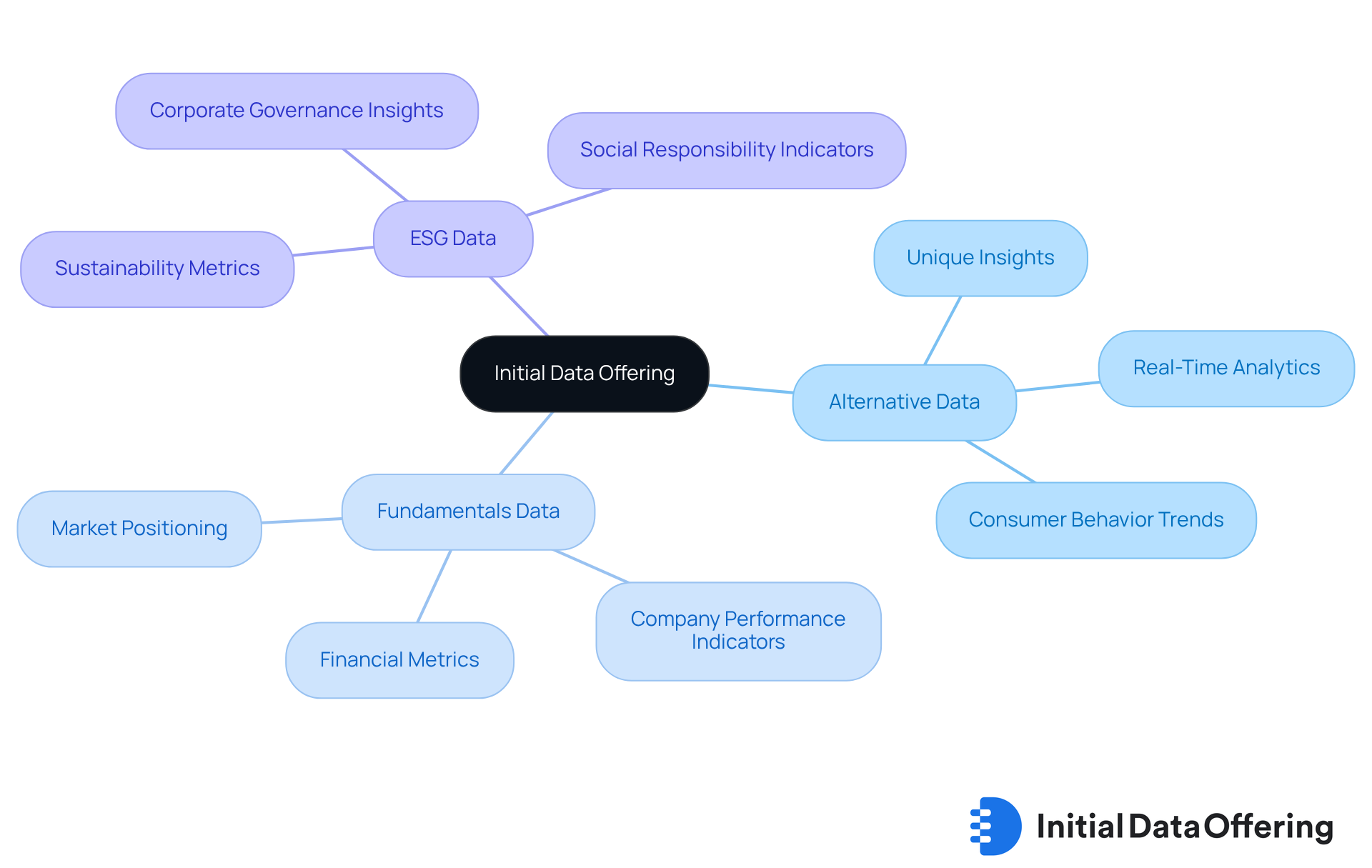
DCSC.ai: Innovative Economic Classification System for Enhanced Analysis
DCSC.ai introduces an innovative economic classification system that revolutionizes information categorization, significantly enhancing analysis capabilities. This groundbreaking tool allows researchers to swiftly identify relevant information and emerging trends, thereby simplifying the analysis process. DCSC.ai is particularly advantageous for gaining product tech insights, fostering a deeper understanding of market segments and consumer preferences. By utilizing over 1500 sectors, including both new and emerging categories, users can achieve a comprehensive perspective on public and private companies within the economic landscape. This enables informed decision-making and strategic planning.
The platform's dynamic relevance scores—AI-driven metrics that update in near real-time based on diverse data sources—ensure users stay attuned to the latest industry developments. Such responsiveness, coupled with affordability, positions DCSC.ai as a superior alternative to traditional classification systems. This makes it an for market research professionals navigating the complexities of today’s data-driven environment. As one industry leader aptly stated, 'DCSC is here to disrupt and democratize sector classification with affordable rates and responsive classification.'
How can you leverage this innovative tool to enhance your market analysis and decision-making processes?
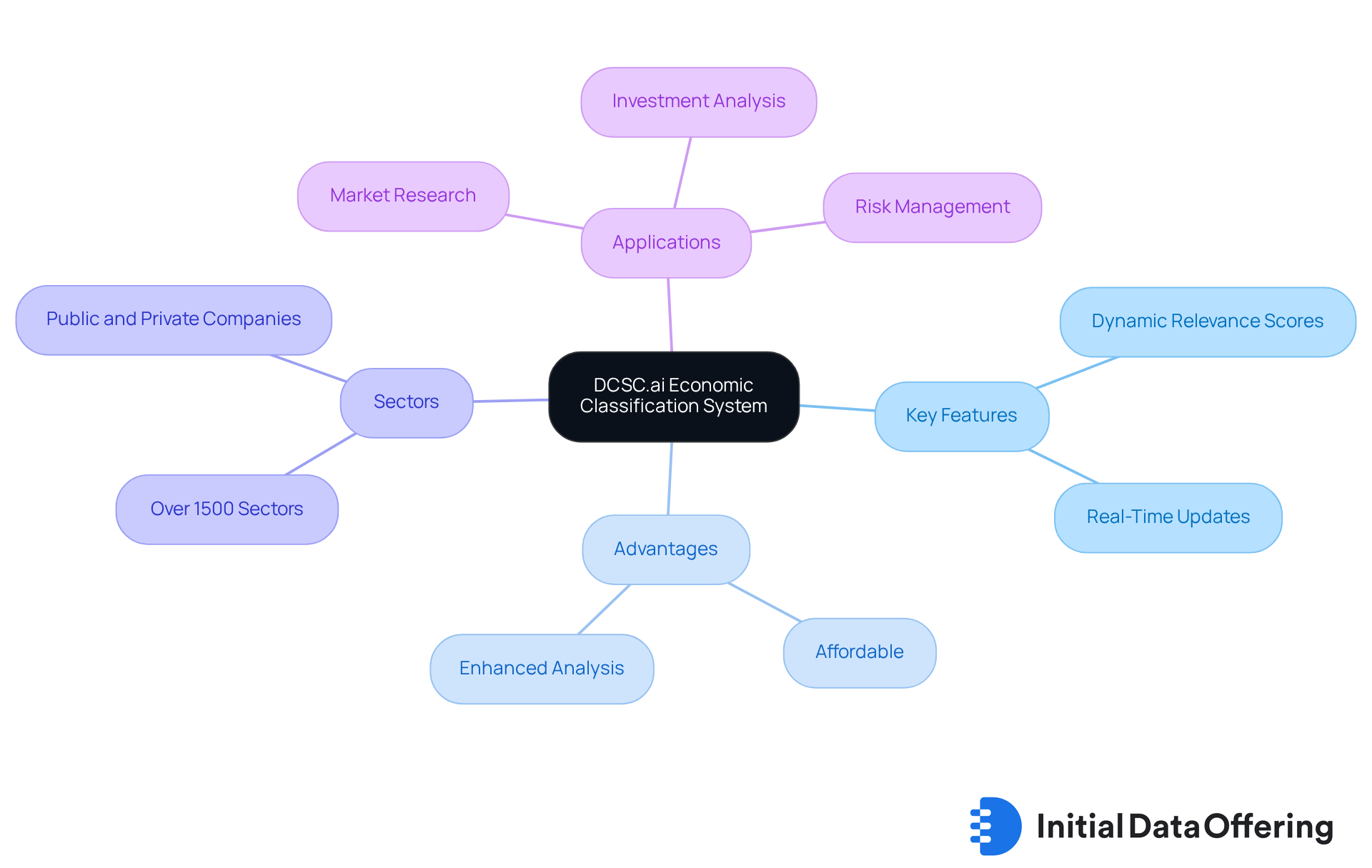
Data Accuracy: Ensuring Reliable Insights for Product Tech Analysis
Data precision is a fundamental feature in product tech analysis, directly influencing the dependability of findings. This precision not only enhances the but also builds trust in the research process. Researchers should prioritize obtaining information from reputable platforms, such as IDO, which emphasizes rigorous quality control.
By implementing validation techniques and cross-referencing data, the accuracy of the information can be significantly improved. This ensures that the insights derived are not only reliable but also actionable, ultimately benefiting decision-making processes.
How can you ensure the data you use meets these standards? Consider the implications of utilizing high-quality data in your own work.
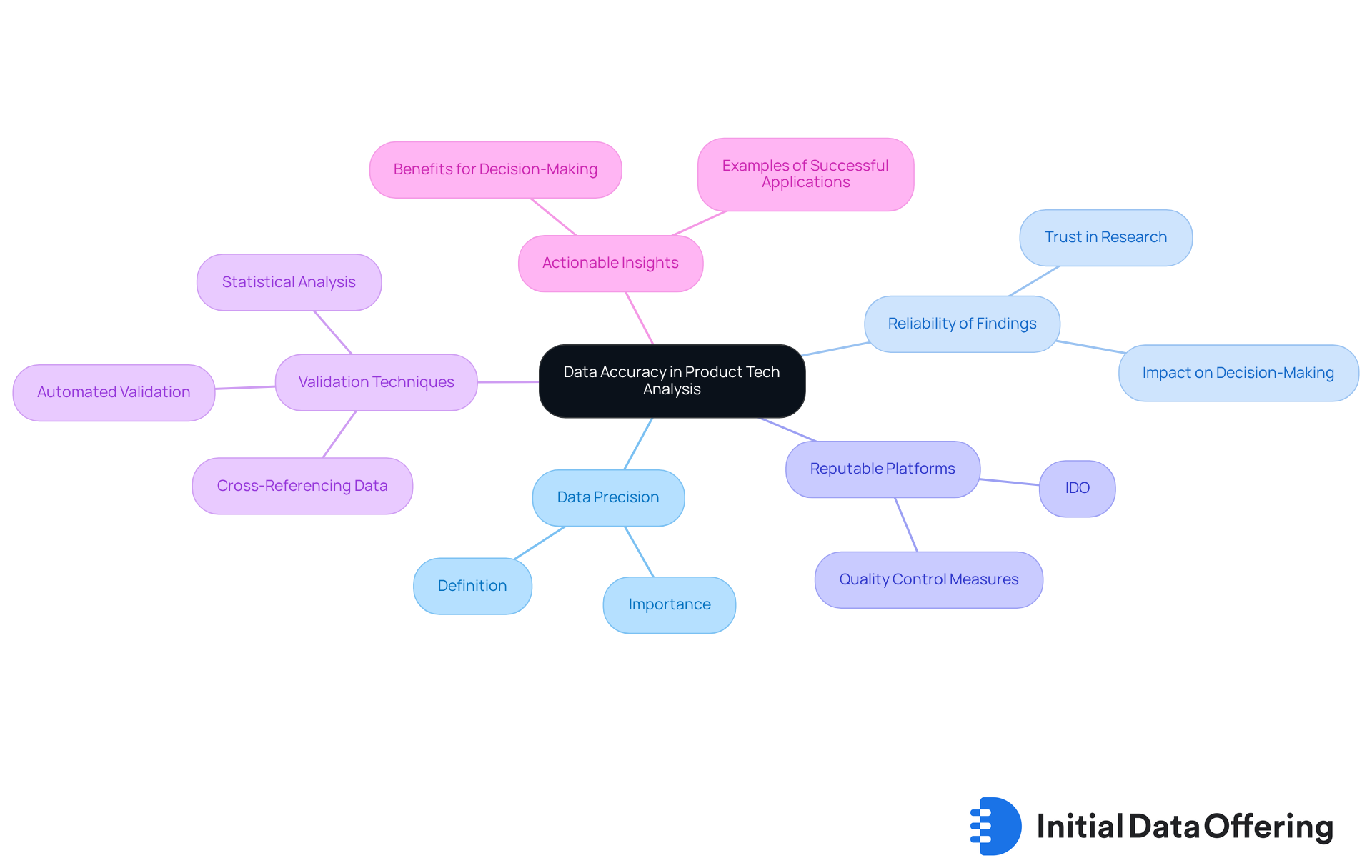
Data Visualization Tools: Simplifying Complex Data Interpretation
Data visualization tools are essential for simplifying the interpretation of complex datasets, significantly benefiting researchers in product tech. Tools like Tableau and Power BI allow users to create interactive dashboards, effectively highlighting key trends and insights. By converting raw information into visual formats, these tools facilitate quicker comprehension of patterns, enabling stakeholders to make informed decisions rapidly.
Research indicates that companies utilizing interactive visualization tools are 28% more likely to locate information faster than those relying on static dashboards. Furthermore, 80% of companies employing real-time analytics reported an increase in revenue, underscoring the financial advantages of these advanced tools.
Veritis emphasizes that "these tools assist businesses in swiftly , monitoring KPIs, and making informed choices by presenting intricate information in an easily comprehensible visual format." This capability not only enhances the analysis process in product tech but also fosters better outcomes, as clear visuals can forge emotional connections with the information, resonating deeply with audiences.
As the field evolves, the significance of these tools in decision-making continues to grow, highlighting their role in cultivating a data-driven culture.
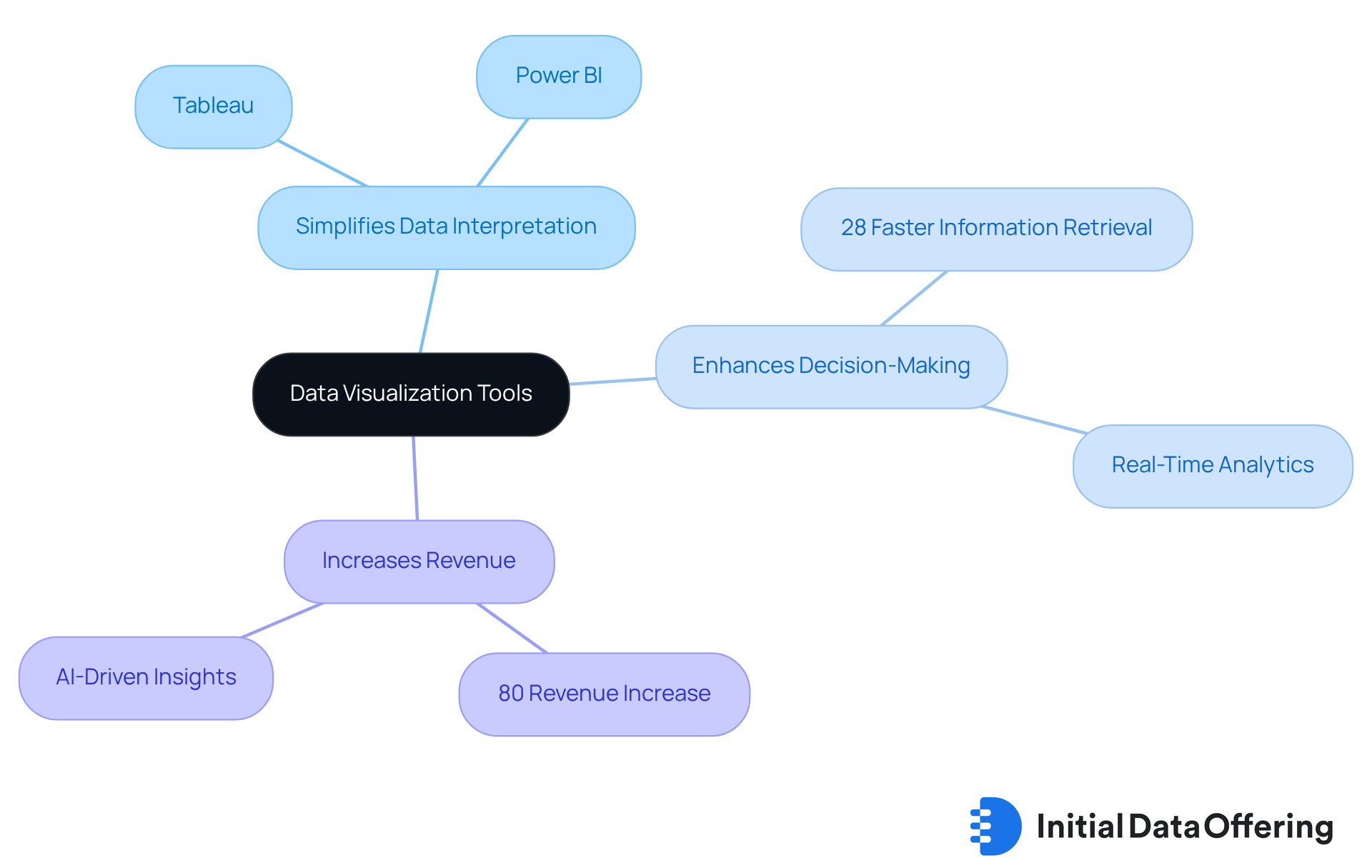
Market Trend Analysis: Tools for Staying Ahead in Product Tech
Market trend analysis tools, such as Google Trends and SEMrush, play a crucial role in the product tech sector by providing real-time insights into consumer interests and industry dynamics. These product tech tools enable businesses to adapt their strategies effectively, ensuring they remain relevant in a rapidly changing market landscape. By leveraging these insights, companies can align their product tech offerings with emerging trends, thereby enhancing their competitive edge.
Google Trends, for example, allows businesses to monitor search behaviors and pinpoint rising keywords, which can significantly inform product tech and marketing strategies. Importantly, the data from Google Trends is directional, offering insights into relative popularity rather than absolute figures. This understanding is vital for recognizing its limitations and effectively identifying emerging trends, potential opportunities, or threats within the industry. Similarly, SEMrush provides comprehensive research capabilities in product tech, empowering businesses to analyze competitors' strategies and refine their own approaches.
Market analysts stress the necessity of utilizing these tools for actionable insights. As one expert remarked, 'To grow, stay relevant, and outperform competition, you need to innovate.' Integrating real-time data into strategic planning not only enhances responsiveness but also fosters a proactive approach to market shifts. By consistently monitoring trends and combining Google Trends data with other sources, businesses can anticipate changes in consumer behavior and adjust their strategies accordingly. This ultimately leads to improved outcomes and .
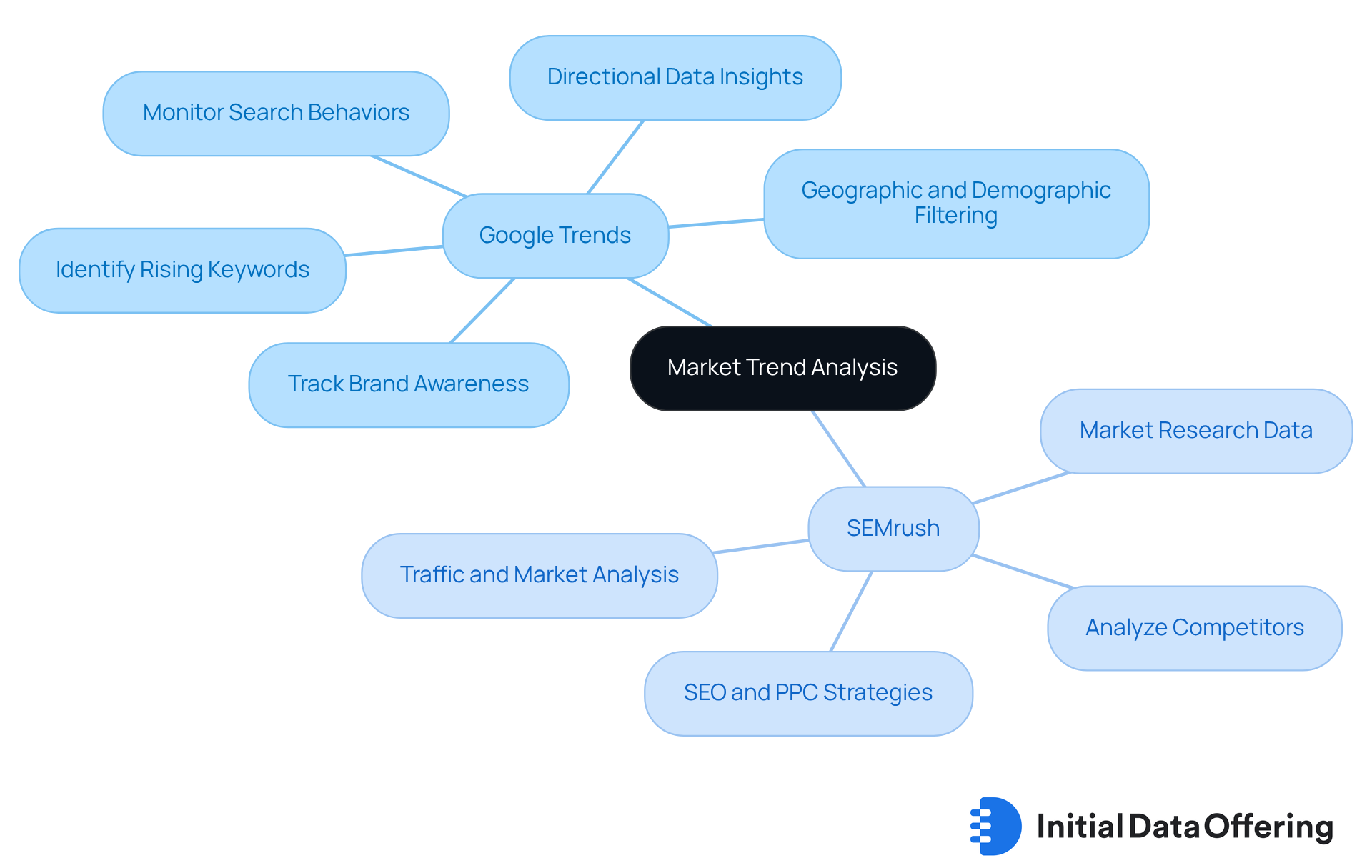
Alternative Data: Unlocking New Insights for Product Tech Research
Alternative information sources, particularly social media sentiment and web scraping, offer significant features that enhance research in product tech. These sources provide invaluable insights that can uncover concealed trends and assess often overlooked by conventional datasets.
The integration of these alternative information streams not only broadens the understanding of industry dynamics in product tech but also empowers analysts to make informed choices based on real-time consumer feedback.
Furthermore, the incorporation of social media sentiment analysis has proven advantageous for improving market understanding, allowing for a more nuanced interpretation of consumer behavior and preferences.
As researchers increasingly recognize the importance of these observations, the ability to harness social media sentiment becomes essential for maintaining a competitive edge in the technology sector.
How can you leverage these insights in your own research strategies to stay ahead?
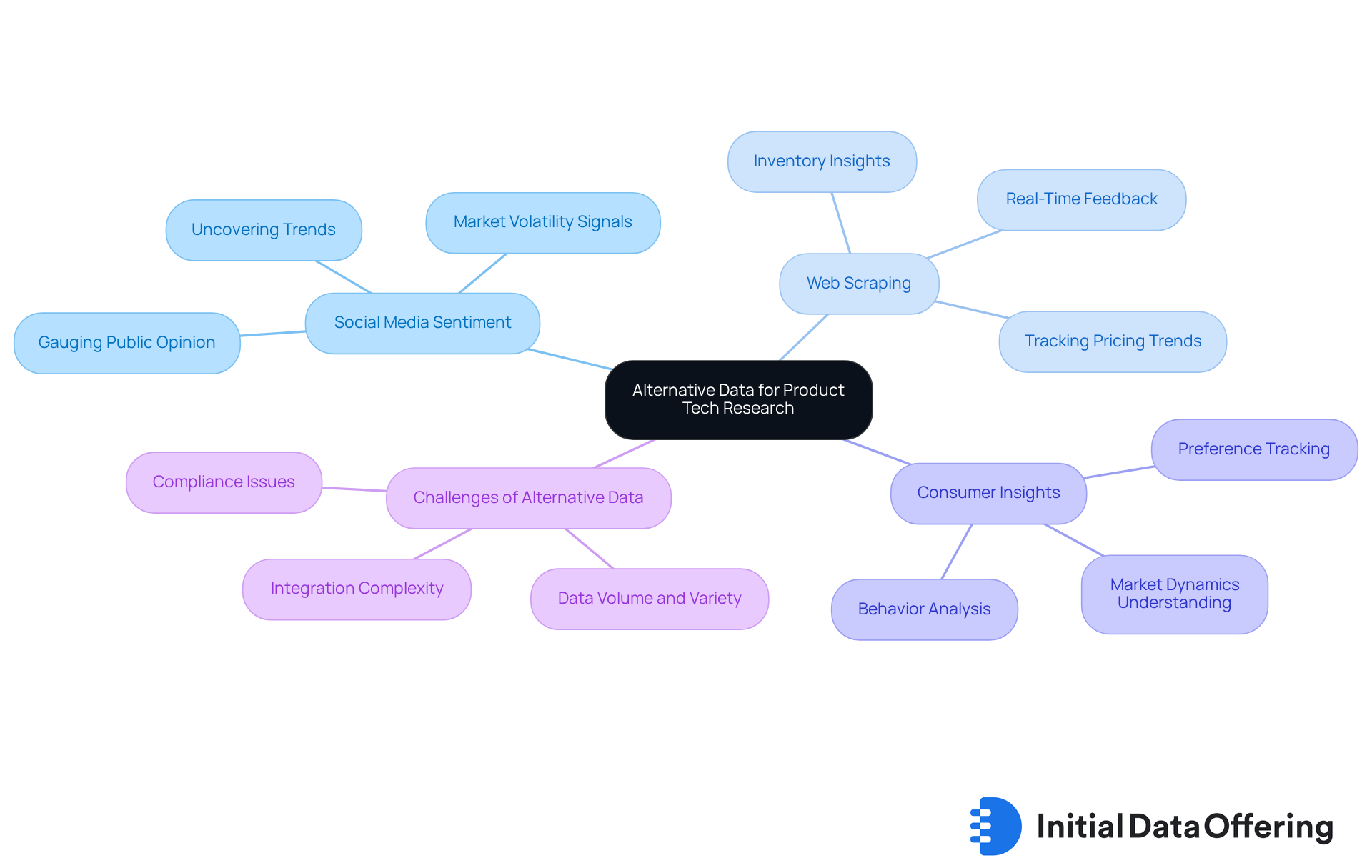
ESG Data: Integrating Sustainability into Product Tech Insights
The incorporation of Environmental, Social, and Governance (ESG) information into technological insights is becoming crucial as consumer demand for sustainability increases. In 2025, a notable change is anticipated, particularly due to the EU's Corporate Sustainability Reporting Directive (CSRD), which will mandate over 50,000 companies to furnish verifiable ESG information throughout their value chains. This regulatory context highlights the urgency for organizations to integrate sustainability metrics into their strategies for offerings.
Research indicates that nearly 94% of investors believe corporate ESG disclosures often include unverified assertions. This underscores the essential need for trustworthy information in evaluations. Such skepticism is driving increased regulatory scrutiny, making it imperative for companies to ensure high-quality data management.
To effectively assess how products align with sustainability objectives, researchers should utilize . This approach not only enhances market positioning but also fosters responsible innovation in product development. Firms that integrate ESG information into their product strategies are likely to gain a competitive advantage, as consumers are increasingly inclined to support brands that openly address environmental and social responsibilities.
Experts emphasize that organizations must adapt to evolving consumer expectations. Lindsey Hall, Global Head of Thought Leadership at S&P Global Sustainable1, observes, "The merging of ESG and information strategy is no longer a future objective; it is an urgent priority for manufacturing leaders today." Failure to adapt could result in lost market share as sustainability becomes a core focus. Incorporating ESG information into development processes will be essential for meeting regulatory requirements and building consumer confidence.
To begin incorporating ESG information into product development, companies should:
- Evaluate their existing management practices.
- Identify gaps in ESG reporting.
- Invest in robust systems that enable real-time tracking of sustainability metrics.
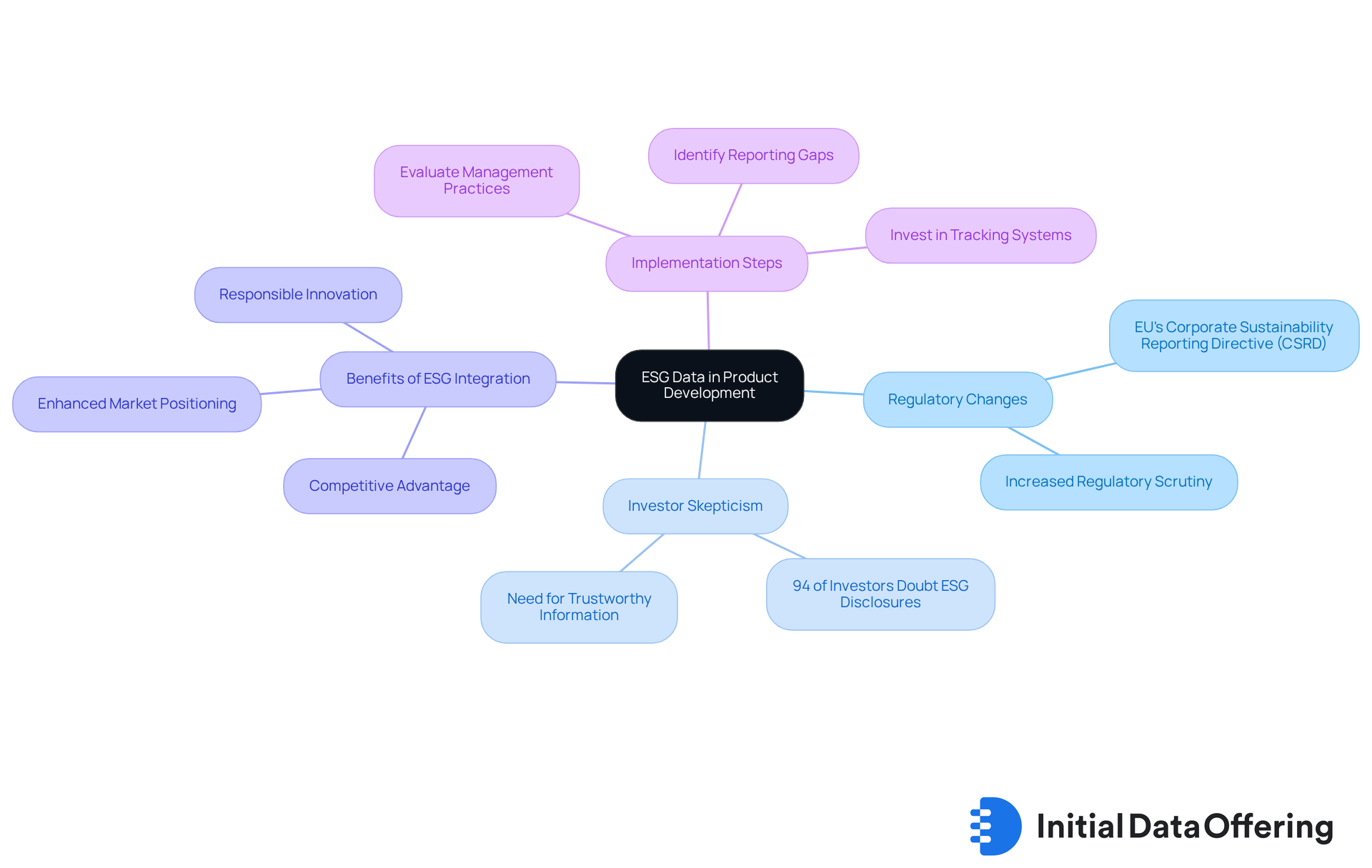
Collaborative Research: Enhancing Insights through Teamwork
Collaborative research significantly enhances understanding by integrating diverse perspectives and expertise. Features such as platforms like Slack and Microsoft Teams facilitate seamless communication and real-time sharing of findings among team members. This optimizes data transfer and improves efficiency, providing a distinct advantage in research processes. The benefits of this collaborative environment extend beyond mere efficiency; it promotes thorough insights and stimulates innovation in product tech analysis.
Industry leaders emphasize the importance of prioritizing diverse voices, which is essential for fostering brand loyalty and long-term success. The British Beauty Council asserts that 'Prioritising diverse voices, particularly in inclusive formulations, is not just an ethical imperative but a business necessity that fuels brand loyalty and long-term success.'
By embracing collaboration, organizations can refine their research methods, leading to better product tech and quicker time to launch. Furthermore, as Nick Portch notes, 'These benefits above are already guaranteed, but the most exciting quality of data is that once enough is aggregated, novel benefits that we are unable to predict today will emerge.'
To implement effective collaborative practices, research analysts should consider establishing regular check-ins using these tools to ensure alignment and foster a culture of open communication. Ultimately, the incorporation of cooperative tools and methods empowers teams to that can significantly influence development and strategy.
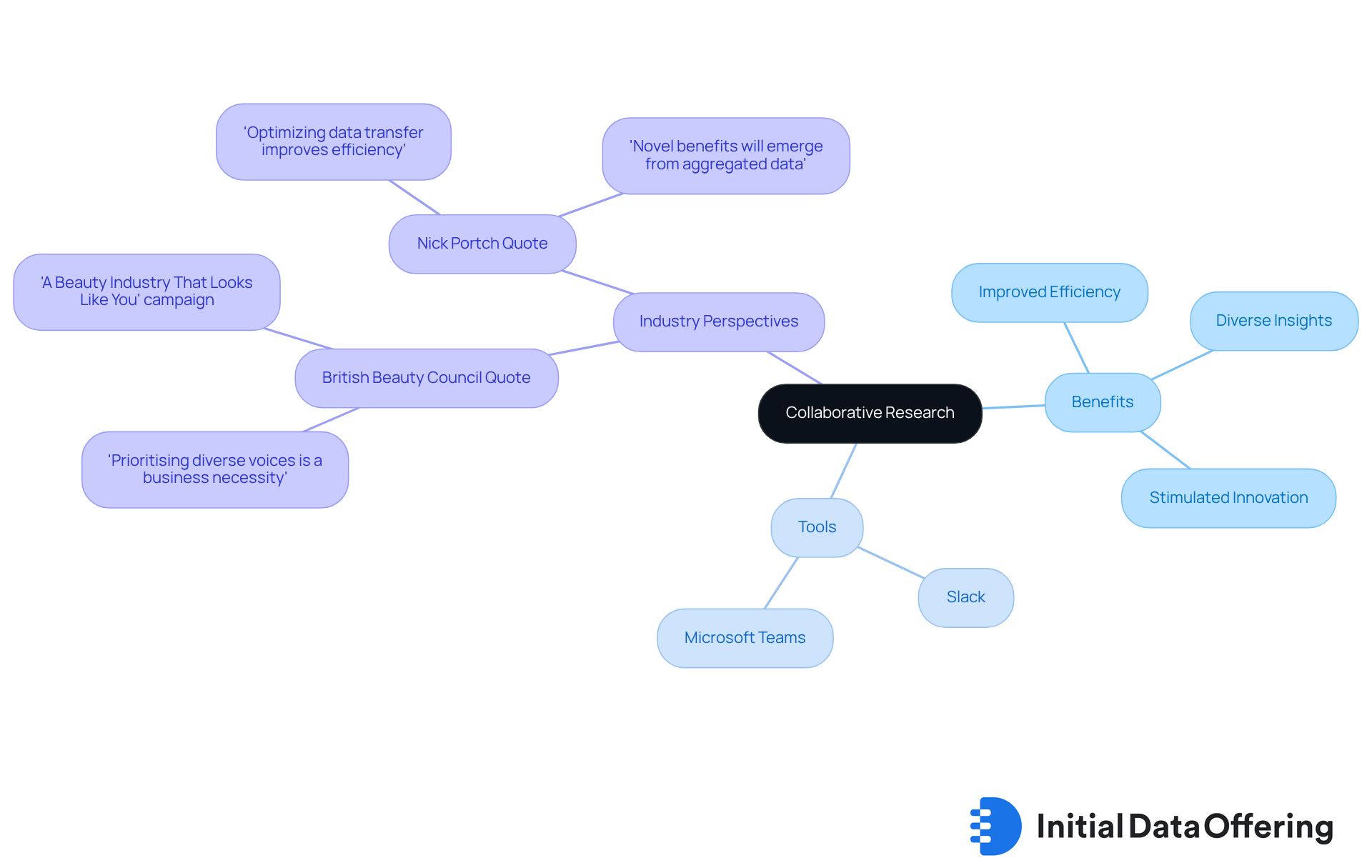
Market Intelligence Platforms: Comprehensive Data for Product Tech Evaluation
Market intelligence platforms, such as Statista and Nielsen, play a crucial role in providing extensive data necessary for evaluating technology. These platforms gather comprehensive information from diverse sources, offering insights into trends, consumer behavior, and competitive landscapes. By leveraging these resources, companies can make informed decisions that significantly enhance their competitive positioning and product development strategies.
Analysts emphasize that utilizing thorough data is essential for effective decision-making, as it allows organizations to swiftly adapt to industry dynamics and consumer preferences. Consider this: studies indicate that 18% of small businesses fail in their first year due to ineffective business planning, which includes a lack of industry analysis. This not only informs strategic planning but also fosters innovation, ensuring that products align with the evolving demands of the market.
As one analyst aptly noted, "The big benefit of using market research tools and resources to study a target audience’s perceptions... is that you can make better, more informed decisions based on data rather than intuition or experience.
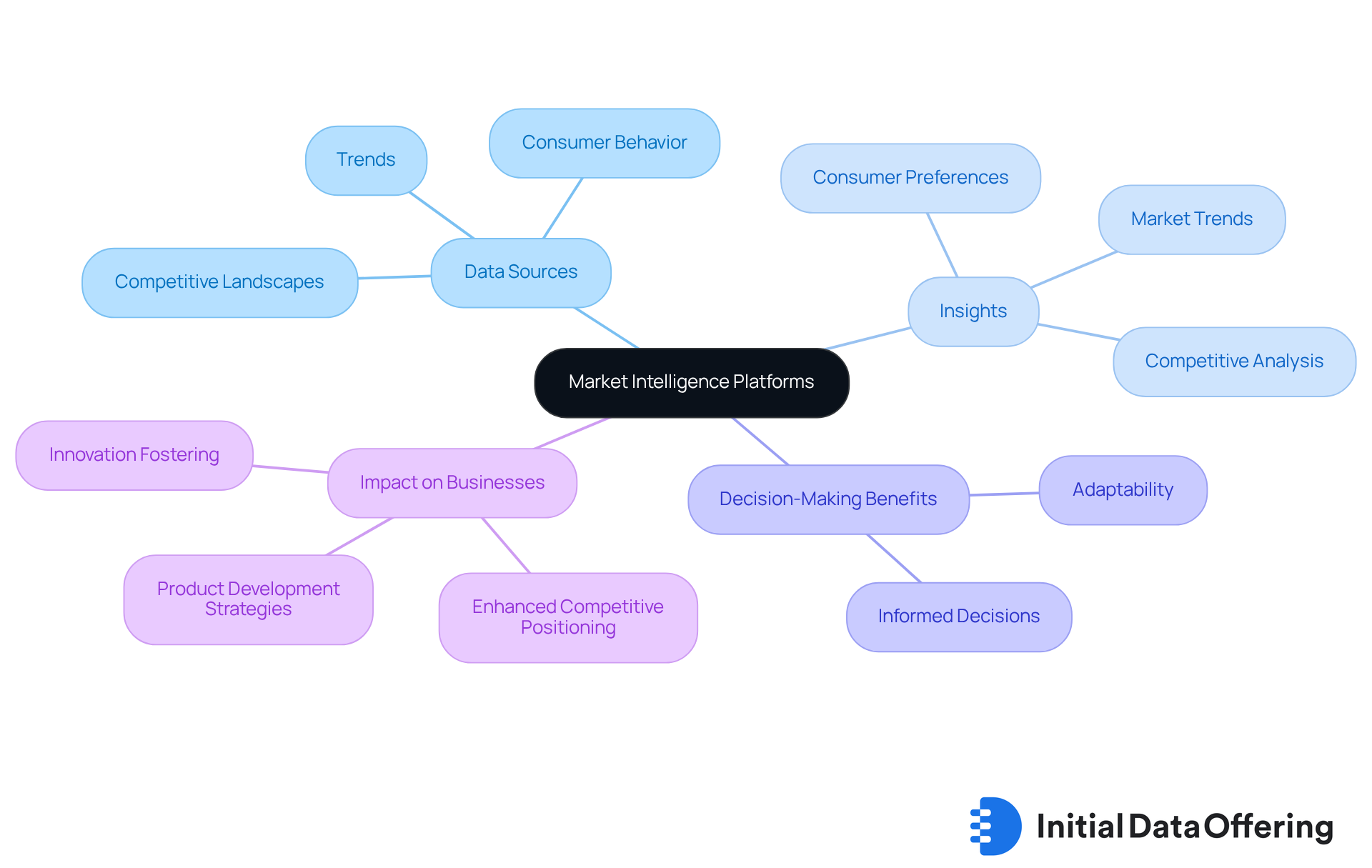
Continuous Learning: Adapting to Evolving Product Tech Landscapes
Continuous learning is crucial for adapting to the ever-evolving landscape of product tech. Researchers and businesses must engage in regular training and professional development to remain informed about the latest trends and technologies.
Online courses, webinars, and industry conferences serve as valuable resources, providing opportunities to gain new insights and skills. These avenues not only but also ensure that teams stay competitive and innovative.
How can your organization leverage these resources to foster a culture of continuous learning? By prioritizing ongoing education, teams can better navigate the complexities of product tech, ultimately leading to improved performance and success.
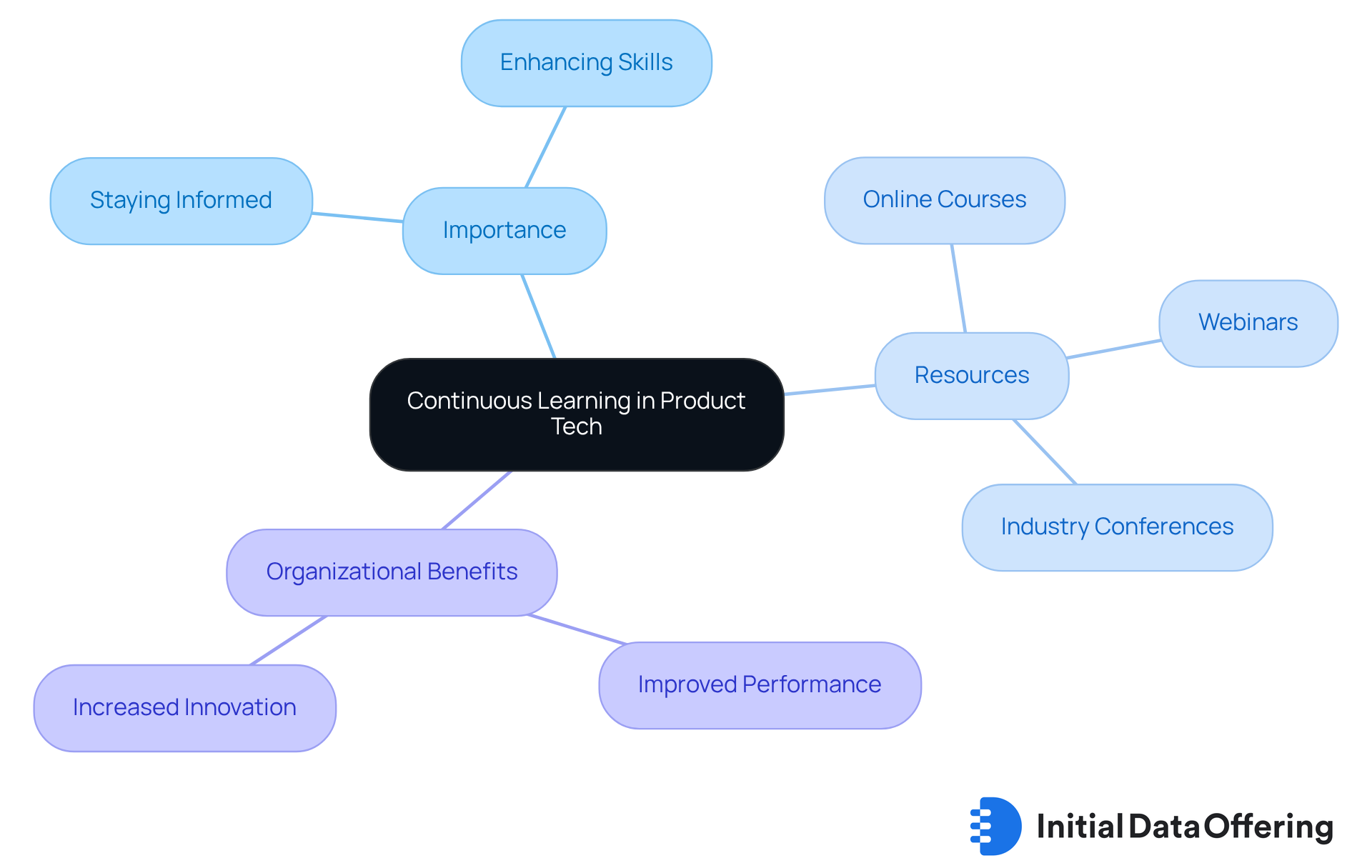
Conclusion
The exploration of essential tools for product tech insights and analysis highlights the critical importance of leveraging diverse datasets, innovative classification systems, and reliable data sources in today's rapidly evolving market. Utilizing platforms like Initial Data Offering and DCSC.ai provides access to unique datasets that enhance analytical capabilities, leading to more informed decision-making. The integration of data visualization tools and market trend analysis empowers organizations to interpret complex information effectively and stay ahead of industry shifts.
Key insights reveal that data accuracy, alternative data sources, and ESG considerations are vital for achieving actionable insights in product technology. The emphasis on collaboration and continuous learning underscores the necessity for teams to adapt and innovate in response to changing consumer demands and technological advancements. By embracing these tools and strategies, businesses can significantly improve their market positioning and drive sustainable growth.
Ultimately, these insights extend beyond mere analysis; they represent a call to action for organizations to prioritize data-driven practices and cultivate a culture of continuous improvement. Harnessing the power of these essential tools not only enhances product tech analysis but also positions companies to thrive in an increasingly competitive landscape. How can your organization leverage these insights to enhance its strategies and foster growth?
Frequently Asked Questions
What is the Initial Data Offering (IDO)?
The Initial Data Offering (IDO) is a centralized hub for accessing a diverse range of datasets, including alternative data, fundamentals data, and ESG data, enabling market researchers to leverage unique datasets powered by advanced AI technologies.
How does IDO benefit market researchers?
IDO allows market researchers to derive actionable insights, facilitating informed decision-making in a competitive landscape while ensuring access to the latest trends and information.
What is DCSC.ai?
DCSC.ai is an innovative economic classification system that enhances information categorization and analysis capabilities, allowing researchers to quickly identify relevant information and emerging trends.
How does DCSC.ai improve market analysis?
DCSC.ai provides insights into over 1500 sectors, including new and emerging categories, enabling users to achieve a comprehensive perspective on public and private companies, which aids in informed decision-making and strategic planning.
What are dynamic relevance scores in DCSC.ai?
Dynamic relevance scores are AI-driven metrics that update in near real-time based on diverse data sources, ensuring users stay informed about the latest industry developments.
Why is data accuracy important in product tech analysis?
Data accuracy is crucial because it directly influences the reliability of findings, enhances trust in the research process, and ultimately benefits decision-making.
How can researchers ensure data accuracy?
Researchers can ensure data accuracy by obtaining information from reputable platforms, implementing validation techniques, and cross-referencing data to improve the reliability of insights derived.